It's known that the act of skiing dates back at least 8,000 years. Here's the full story of Norway's love affair with skiing, from critical transport method to recreation and sport.
It's no surprise to hear that Norwegians love skiing. But once you move to Norway, you soon discover just how much they love skiing, the national sport of Norway.
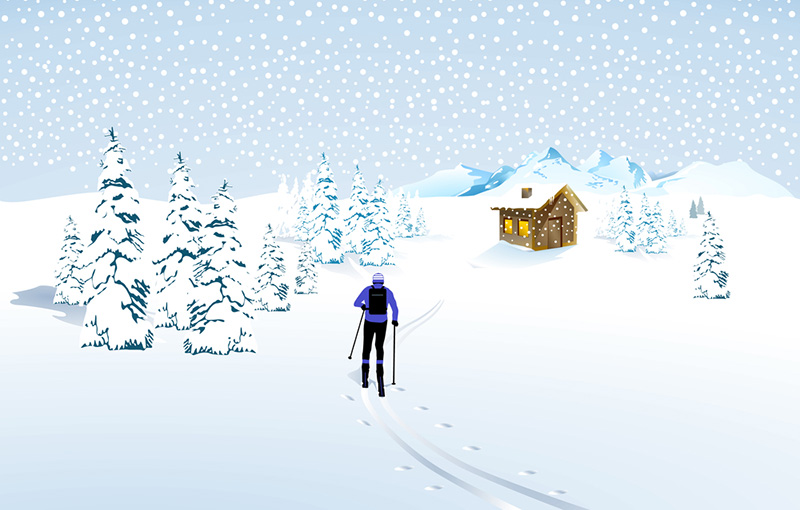
Their love for the sport is responsible for the country's stunning performances at Winter Olympics. On winter weekends, city centres are deserted as the locals disappear onto the cross-country skiing trails. When there's snow, at least.
When did skiing begin?
Skiing has taken place in the world for such a long time that we have to rely on archaeological evidence to figure out when the pastime began.
Paintings and carvings
Paintings more than 5,000 years old suggest use of skis in the Altaic region of China. In Russia's White Sea region, rock carvings dated to 2,000-2,500 BC show people on equal length skis hunting game. They appear to show that the hunters use their bow and spear as ski poles.
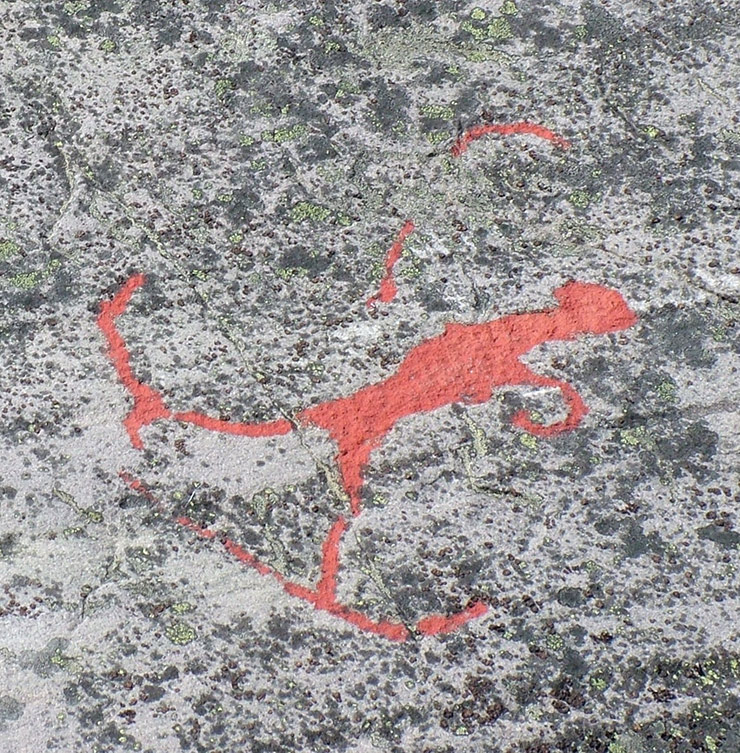
Within Scandinavia, the earliest known reference to skiing dates back to around 3,000-4,000 BC. Primitive carvings depict human figures walking on skis.
The best known is the carving at Rødøy in Norway's Nordland. Here, a skier holding a single pole wears skis of equal length. Elsewhere, one of the famous Alta rock carvings depicts a hunter on skis. This image is dates to around 1,000 BC.
Physical evidence
There's more archaeological evidence when it comes to the skis themselves. In northern Russia, fragments of objects believed to be skis were dated to around 6,300-5,000 BC. The first primitive ski found in Scandinavia was uncovered in a peat bog in Sweden's Jämtland County. It dates back to 4,500-2,500 BC.
Read more: Funny Skiing Quotes
Other notable finds include a Finnish discovery dated to 3,245 BC, Sweden's Kalvträskskidan ski dated to 3,300 BC, and Norway's Vefsn Nordland ski, dated to 3,200 BC. More than 20 well-preserved skis or ski fragments have been found in drained bogs in Norway.
These discoveries in particular indicate skis have been used in Norway—especially in the north—since prehistoric times. Early written evidence includes Procopius' description of Sami people as (translated) as “ski-running sami's”. In fact, the very old Sami word for skiing – čuoigat – suggests Sami people have skied for several thousands years.

So, we know that skiing has been around for a long time. But why?
Early uses of skis as transport and a hunting aid
According to mythology, several Norse gods were described as hunting on skis. In fact, Ullr and Skaði have later been regarded as the god and goddess of skiing and hunting. It's no surprise that the act has been immortalised in the gods given that it was of such importance to early transportation.
Even just a few hundred years ago, there was a lot more snow and ice in Norway than today. Skis, therefore, were of critical importance to get around quickly on land, whether to move from place to place or to aid with hunting wild animals.
The saga of Egil Skallagrimsson describes King Haakon the Good's practice of sending out his tax collection men on skis.
The number of people skiing must have been significant. Among other references, the Gulating law of 1274 states that “no moose shall be disturbed by skiers on private land.”
According to a saga, Haakon IV of Norway was transported as a baby in 1206 by soldiers on skis. He was taken to safety through the hills between Gudbrandsdalen and Østerdalen valleys. The event has a strong legacy to this day in the form of the Birkebeinerrennet ski marathon.
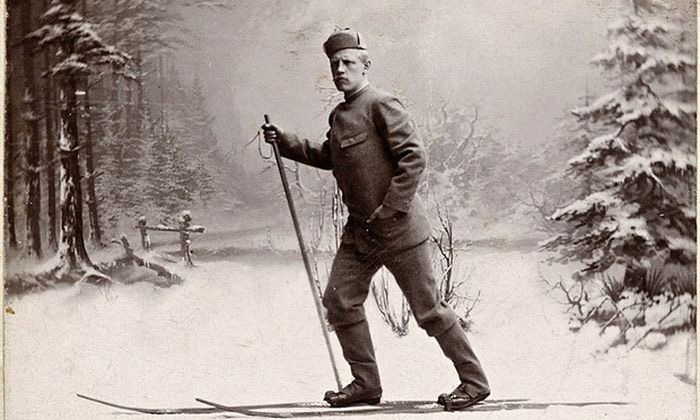
Norwegians had been skiing for many hundreds of years before others began to take notice. In 1799, French traveller Jacques de la Tocnaye wrote of a visit to Norway in his travel diary:
In winter, the mail is transported through Filefjell mountain pass by a man on a kind of snow skates moving very quickly without being obstructed by snow drifts that would engulf both people and horses. People in this region move around like this. I've seen it repeatedly. It requires no more effort than what is needed to keep warm. The day will surely come when even those of other European nations are learning to take advantage of this convenient and cheap mode of transport.
Ski warfare
For many years, soldiers on skis have been used for both offensive and defensive purposes. Another saga describes how King Sverre sent out troops on skis to patrol the Aker area near Oslo. The first use of troops on skis in warfare was recorded in the 13th century by Danish historian Saxo Grammaticus.
The speed and distance that ski troops are able to cover is comparable to that of light cavalry. The Trondheim garrison used skis from the 17th century, when specialised skiing battalions were a common sight in the Danish-Norwegian army.
Skis were also a vital element in the famous Heroes of Telemark story from World War II. In February 1943, a team of Norwegian commandos destroyed the facility, but only after several days of cross-country skiing.
Skiing as recreation and sport
It seems likely the development of skiing from purely function into a competitive sport occurred within the military. The first known races occurred within Norwegian and Swedish infantries. Military races such as cross-country skiing with a full backpack turned into races.
In fact, the military exercise of target practice following a period of skiing eventually became the biathlon Olympic winter sport.
Telemark skiing
Sometimes in the 19th century, skiers in Telemark region challenged each other on wilder slopes that included steep mountains, steep jumps and sharp turns.
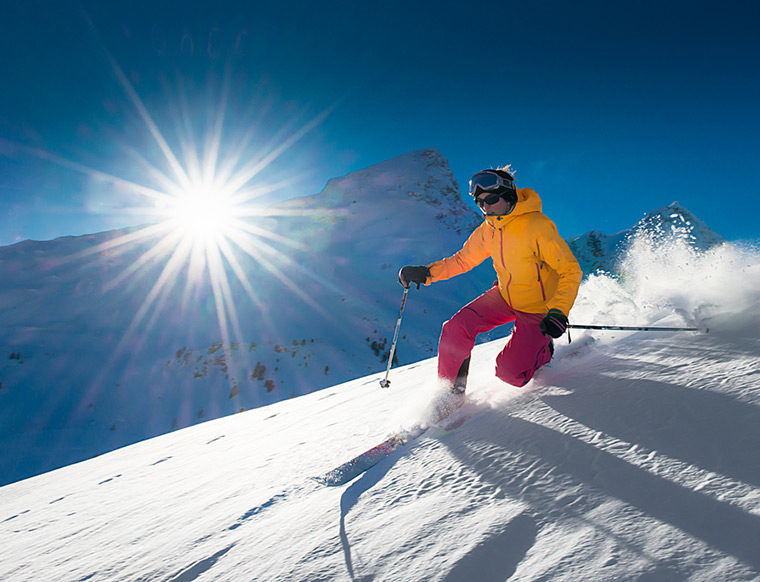
The Norwegian Sondre Norheim is the man most often credited with the invention of what is now known as Telemark skiing. He did this by showcasing the style in races, bringing national attention. He also experimented with the design of skis and bindings, eventually introducing side cuts to skis and heel bindings.
While it has a long history, Telemark skiing is popular today thanks to its renaissance in the United States in the 1970s. Those using the technique use flexible Alpine skis with bindings that fix just the toe of the boot to the ski.
Ski jumping
Ski jumping was first contested in Norway in the late 19th century, although there is evidence of the practise taking place in the 18th century. The first records suggest that Sondre Norheim (remember him!?) won the first ever competition with prizes in 1866.
When Norheim and fellow Norwegian skier Karl Hovelsen relocated to the United States, they introduced the concept there. Its popularity soon spread. In 1924, ski jumping became an Olympic sport for the first time.
Oslo's Holmenkollbakken has been the home of Norwegian ski jumping ever since it first hosted the Holmenkollen Ski Festival back in 1892. The annual event is now part of the FIS Ski Jumping World Cup. The current ski jump opened in 2010.
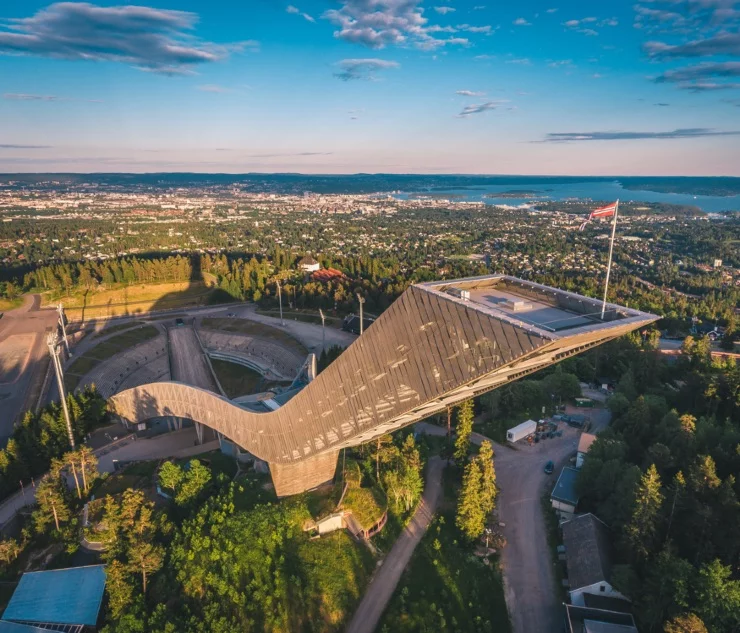
If this article has left you with more questions than answers, then Holmenkollen is also home to a great ski museum, full of exhibits depicting the history of skiing in Norway, and beyond.
The vocabulary of skiing
Most people know that the term ski is a Nordic word. It's origin is from the Old Norse word skíð, which means “cleft wood” or “stick of wood”. Even today, ski in Norwegian and Swedish remains a noun, not a verb.
In Norwegian, the equivalent verb for skiing is å gå på ski, which literally means to walk on skis. To reference a skier, you may call them a skiløper, which literally means a ski runner. But the vocabulary doesn't stop there. Other skiing-related words are of Nordic origin too, such as slalom (from slalåm).


Hi David, thanks for the article.
I’m writing you from Juneau Alaska where I work as a researcher and instructor in the Outdoor Studies program at the University of Alaska Southeast. I’m interested in Norweigan skiing culture, especially primary source documents that might help me track environmental change in the circumpolar north over time. Let me know if you have a moment to chat.
Hi there,
This is a bottle to the sea: I am trying to find information on a ski competition that took place in Norway in 1936 (Galdhøpiggen), to which my grand mother participated. Apparently she won it. Her name was Geneviève du Manoir, nickname “Zizi”.
A family legend says that she left her nickname to a ski shuss slope there: no idea whether this is true or not: ? (couldn’t find anything about this).
Zizi tragically died in 1940, at the age of 28.
Anyone who could tell me a bit more about this ski competition in 1936 in Galdhøpiggen ? Anything available ?: press / photos / film from 1936 ? Does the Zizi schuss really exist ?
Zizi had a short but incredible life.
More info on Zizi : https://fr.wikipedia.org/wiki/Zizi_du_Manoir
Thks for helping if you can.
I know this is not exactly the kind of post you may expect. Pls accept my apologize for the inconvenience.
With Rgds,
Hugues de Rivals